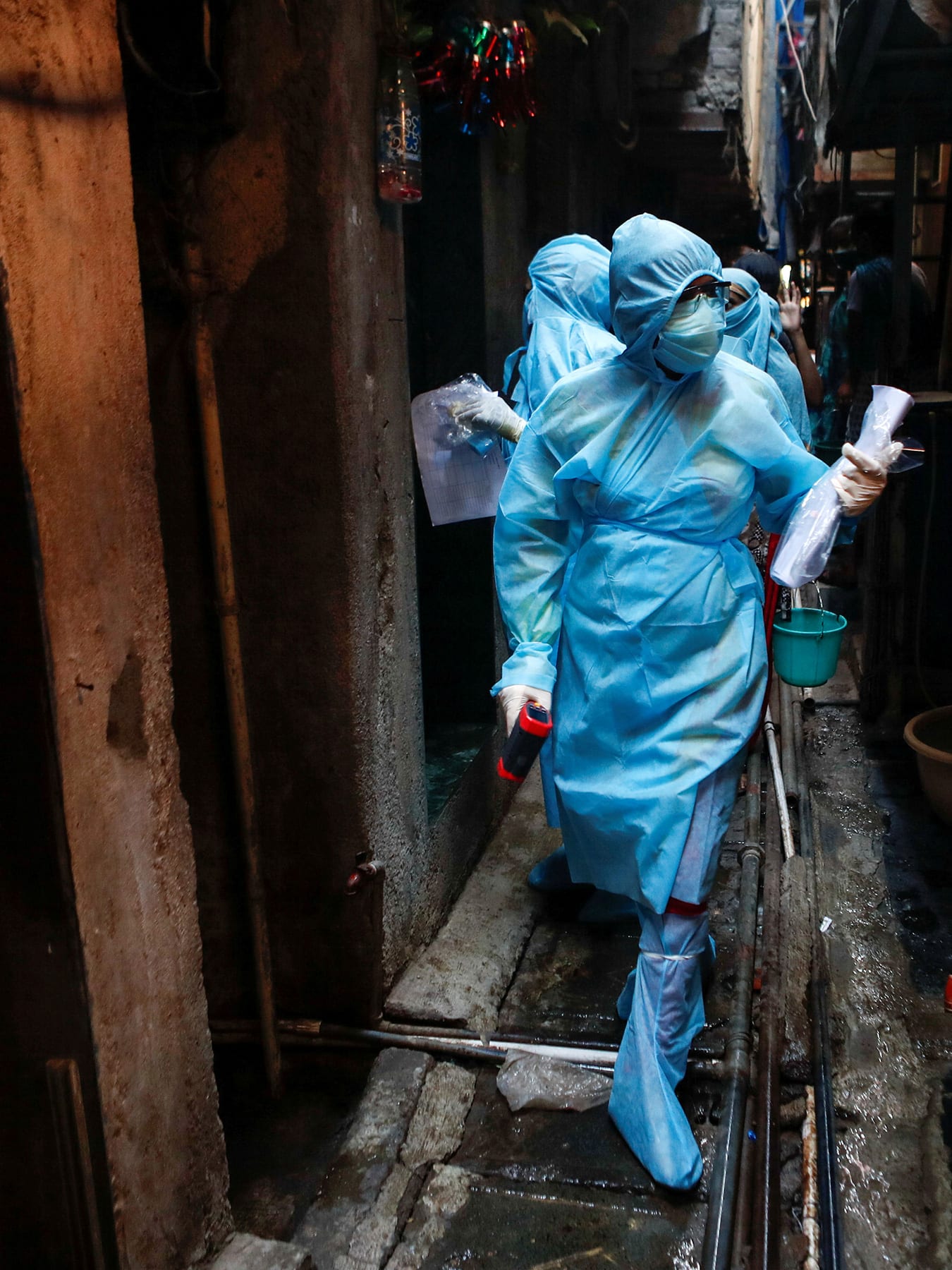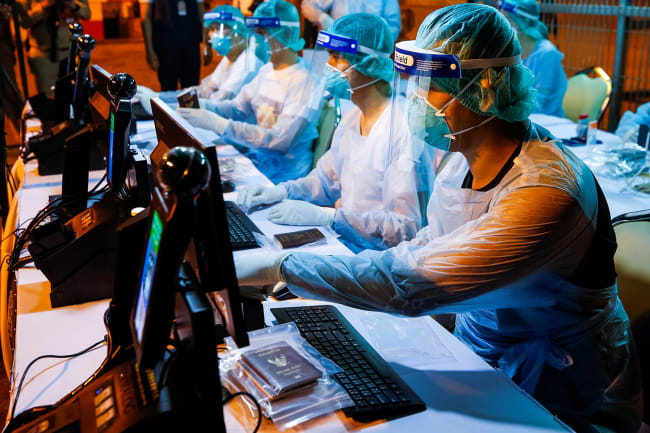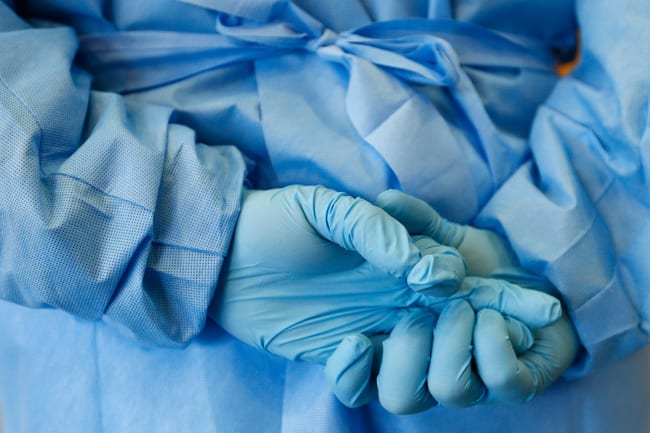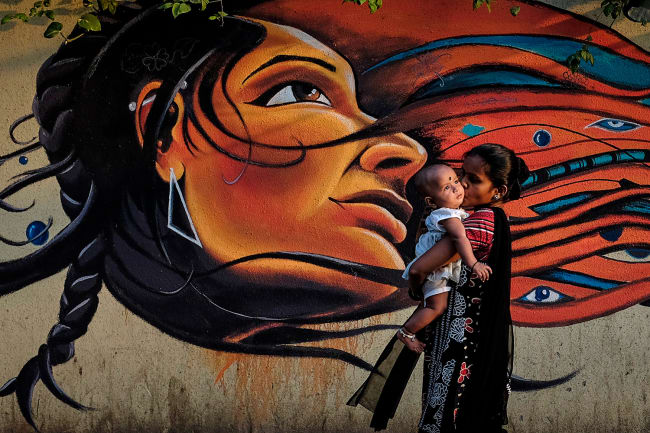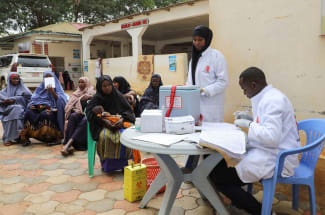Many health workers fighting the COVID-19 pandemic and working to provide health security are on the front lines equipped only with commitment, courage, and the burden of expectations. In many countries, they are on the field without even the basic adequate protection of gloves and hand sanitizer.
More than 12 percent of those infected globally with SARS-CoV-2, have been health workers
Some of the most vulnerable populations in the world in the face of the pandemic are health-care workers—70 percent of whom are women. At the time of writing, more than 12 percent of those infected globally with the coronavirus SARS-CoV-2, which causes COVID-19, have been health workers. This pandemic has brought to the fore urgent questions on gender equity that need to be addressed even in the midst of the crisis.
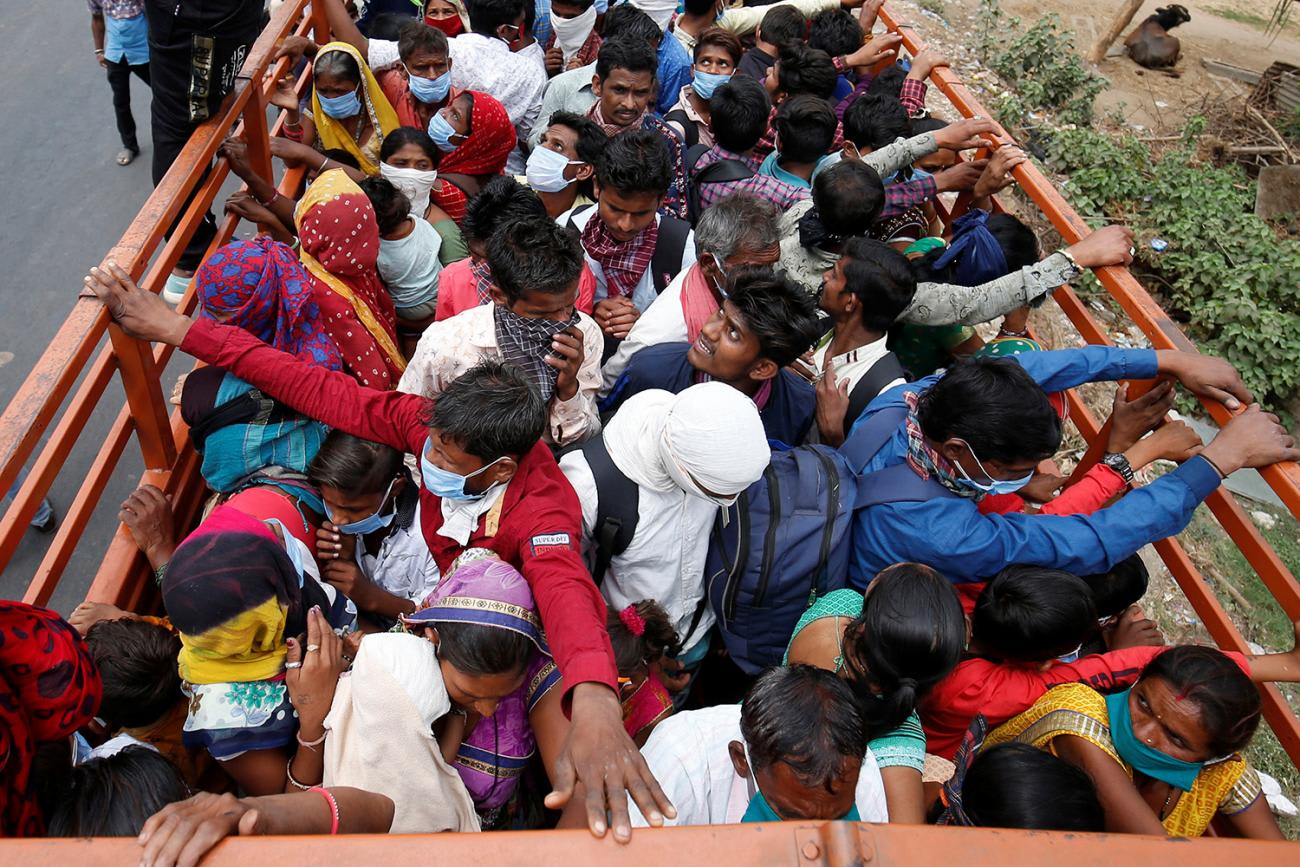
The Gendered Approach to the Pandemic
Feminist scholars are rightfully pushing for gender analysis on "how socially constructed roles and identities affect vulnerability to and experiences of an outbreak." Further, as the recent book Invisible Women pointed out, "lack of sex-disaggregated data affects our ability to give women sound medical advice."
Lack of sex-disaggregated data affects our ability to give women sound medical advice
from "Invisible Women"
The crisis is precisely the time to be talking about "feminist foreign policy," because protectionist trade practices, among other barriers, are hurting access to personal protective equipment for these health workers.
Protection of health workers also has implications for global health security, a more acceptable framing even in the twenty-first century. These implications are not elite framings of complex, fast-changing governance questions but translate into very real and raw concerns for women health workers on the ground.
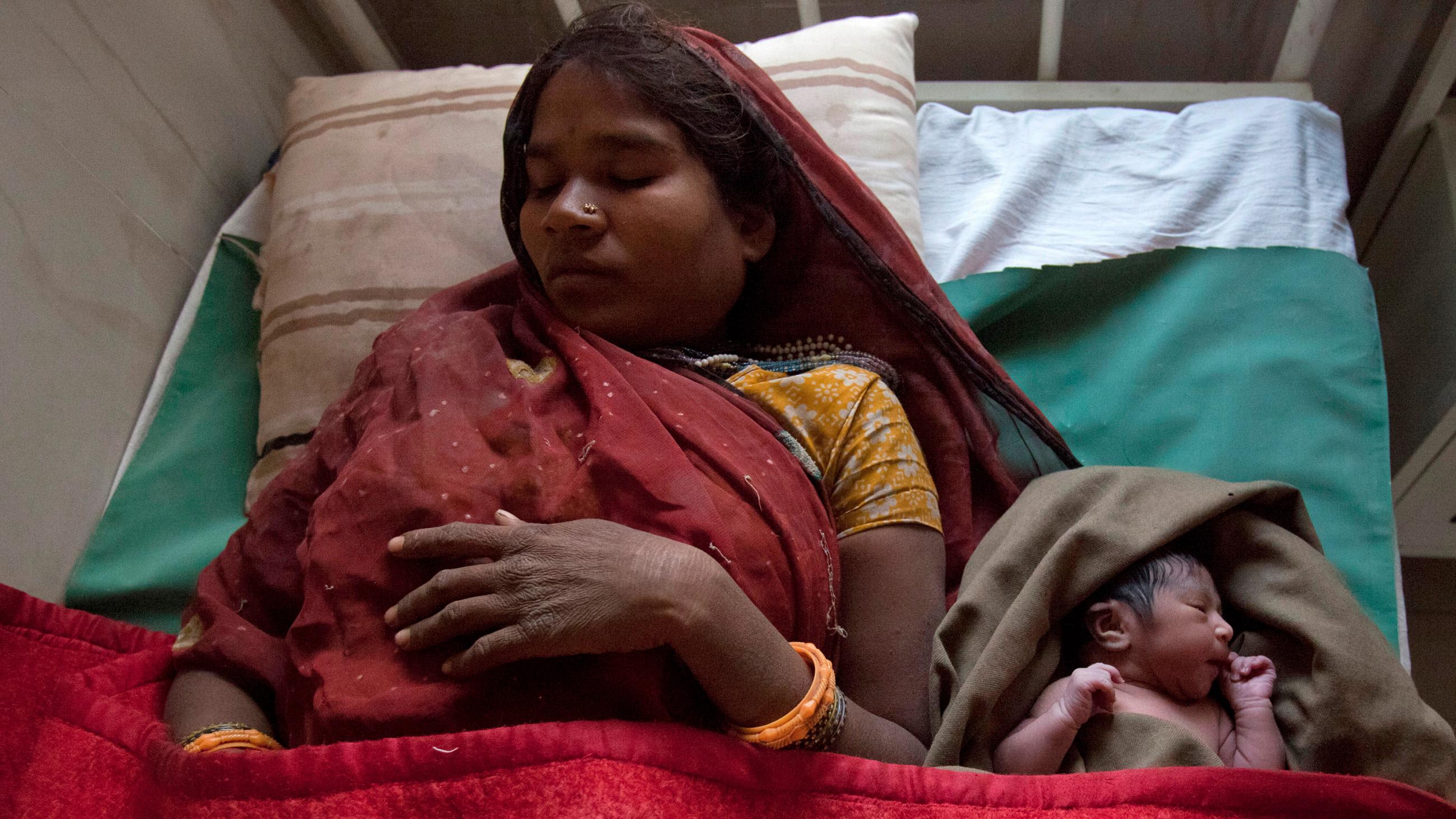
Examining the gendered impacts of the outbreak is critical for science, as well as for foreign policy and health security. Worldwide, women and health workers are at the forefront of working with affected communities, from hospitals to the hinterlands, and yet "women have not been fully incorporated into global health security surveillance, detection, and prevention mechanisms." Experts believe that women have a unique vantage point to "identify trends at the local level that might signal the start of an outbreak and thus improve global health security."
In effect, they are the eyes and ears of not only the medical establishment but also the health security apparatuses within countries. This article is a small tribute to one such group of health workers of the millions worldwide—the community health workers of India.

The Case of India's Health Workers
Apart from medical personnel, India's network of grassroots health workers includes those associated with the anganwadi workers, the accredited social health activists and the auxillary nurse midwives.
The word anganwadi loosely translates to courtyard shelter. First established in 1975 as the Indian government's system of providing childcare in these rural courtyard shelters, anganwadis are a part of the Integrated Child Development Services program meant to address child hunger and malnutrition. The 2018 Global Nutrition Report says that India is home to more than forty-five million stunted children, accounting for a third of such cases worldwide, and more than twenty-five million wasted children (low weight for their height). A child with both conditions has an increased likelihood of contributing to mortality rates. In addition, India has a near 40 percent probability of dying under five per thousand live births.
Some 3 million people work in more than 1.3 million anganwadi centers—the smallest units of India's public health system
In some sense, the anganwadi centers are the smallest unit of India's public health system, coordinating and communicating activities around basic health care. There are more than 1.3 million such centers with three million workers. The centers are tasked with a range of public health responsibilities including providing supplementary nutrition, informal preschool education, nutrition and health education, immunization, health check-ups, and referral services to nearly eighty-eight million beneficiaries—primarily children under the age of six and pregnant and lactating women. Working alongside an army of three million anganwadi workers are more than nine hundred thousand accredited social health activists. The accredited social health activists initiative was the result of the 2005 National Rural Health Mission, affiliated with the Ministry of Health and Family Welfare. A single ASHA worker looks after more than one thousand families in an administrative unit, reports have said.
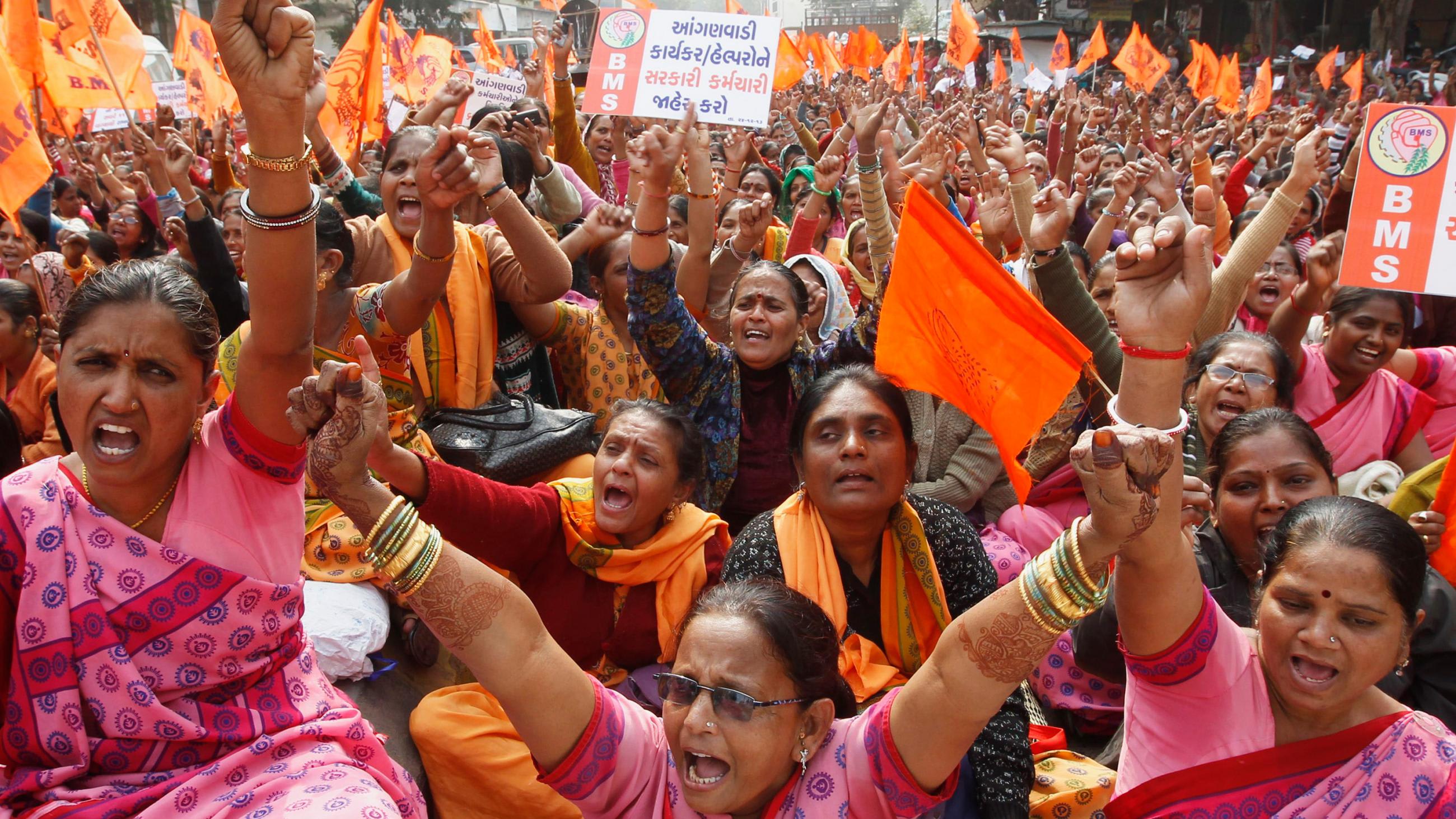
The Indian government has mobilized this network of grassroots-level workers in its last-mile fight against the pandemic. The government has announced plans to train the workers in prevention and control measures and in community surveillance.
Accredited social health activists are severely underpaid—around $80 per month—and are designated as honorary volunteers
But it is not clear how this will pan out in practice, as numerous reports from different parts of India have stated that the workers had sought training and protective equipment such as masks, gloves, and body suits. And yet, these workers have been functioning as contact-tracers for COVID-19 cases in many parts of India. These community health workers have repeatedly protested during recent years, with thousands taking to the streets demanding better pay, security, benefits, and improved processes. They are workers who are aware of their rights, even courting arrests in their demands for better treatment.
Accredited social health activists are severely underpaid, around $80 per month, and are designated as honorary volunteers. As affiliated government employees, they could have access to paid leave and other basic benefits. (For a period of three months during the pandemic, these workers have been paid an additional $15 per month.)
But the story from rural India is only one part of the picture.

COVID-19 has already hit urban India in full force, with more than 46,000 confirmed cases and more than 1,500 reported deaths countrywide at the time of writing. The actual numbers are expected to be much higher, for the simple reason that many deaths never get captured in official death statistics owing to weak surveillance systems for reporting diseases. Experts believe only a fifth of India's deaths are recorded and certified.
Experts believe only a fifth of India's deaths are recorded and certified
Just ahead of observing World Health Day on April 7, 2020, when World Health Organization (WHO) marked the International Year for the Nurse and the Midwife, twenty-six nurses and three doctors tested positive for COVID-19 in a single hospital in Mumbai. A couple hundred health workers in India, including doctors, nurses, and cleaners, have reportedly contracted the infection while at work.
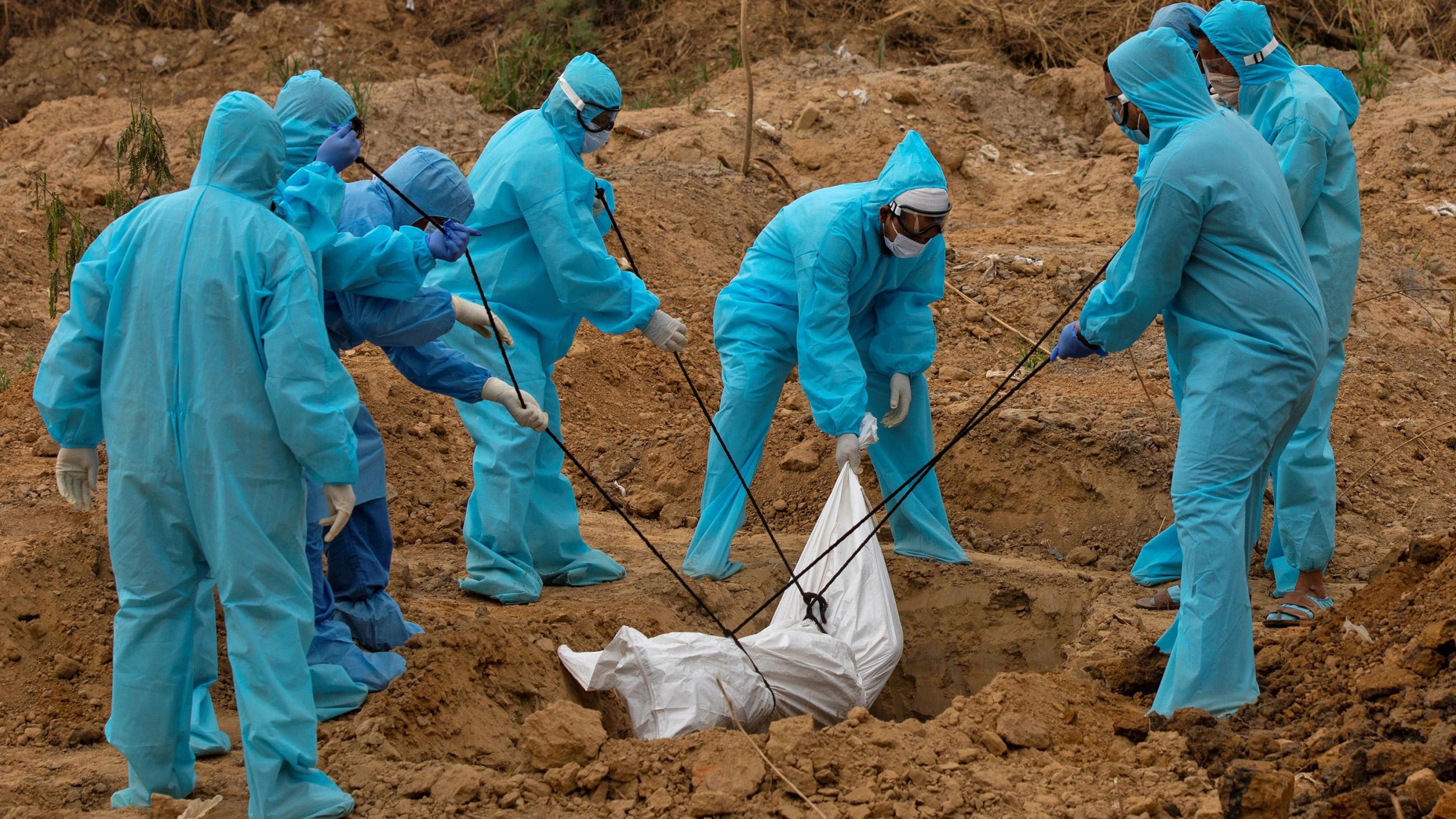
The Burden on India's Weak Health Systems and its Informal Economy
India's lack of preparedness is unfortunately not surprising. India spends only 3.5 percent of its gross domestic product (GDP) on health care, with per capita health expenditure a mere $69 (2017) against a GDP per capita of $1,960. All this has implications for the security of health workers.
India spends only 3.5 percent of its gross domestic product on health care—a mere $69 per capita
India has half a hospital bed for every thousand inhabitants, according to the Organization for Economic Cooperation and Development (OECD)—compared to 4.3 beds in China. The OECD said this indicator provides a measure of the resources available for delivering services to inpatients in hospitals in terms of number of beds that are maintained, staffed, and immediately available for use. Total hospital beds include curative care beds, rehabilitative care beds, long-term care beds, and other beds in hospitals. The indicator is presented as a total for curative (acute) care and psychiatric care.
A WHO report from 2016 estimated that nearly 40 percent of all health workers in India are women. Women account for 80 percent of nurses and midwives in India (who in turn account for 30.5 percent of all health workers). This study on the health workforce is based on data at district level from the Indian census of 2001.
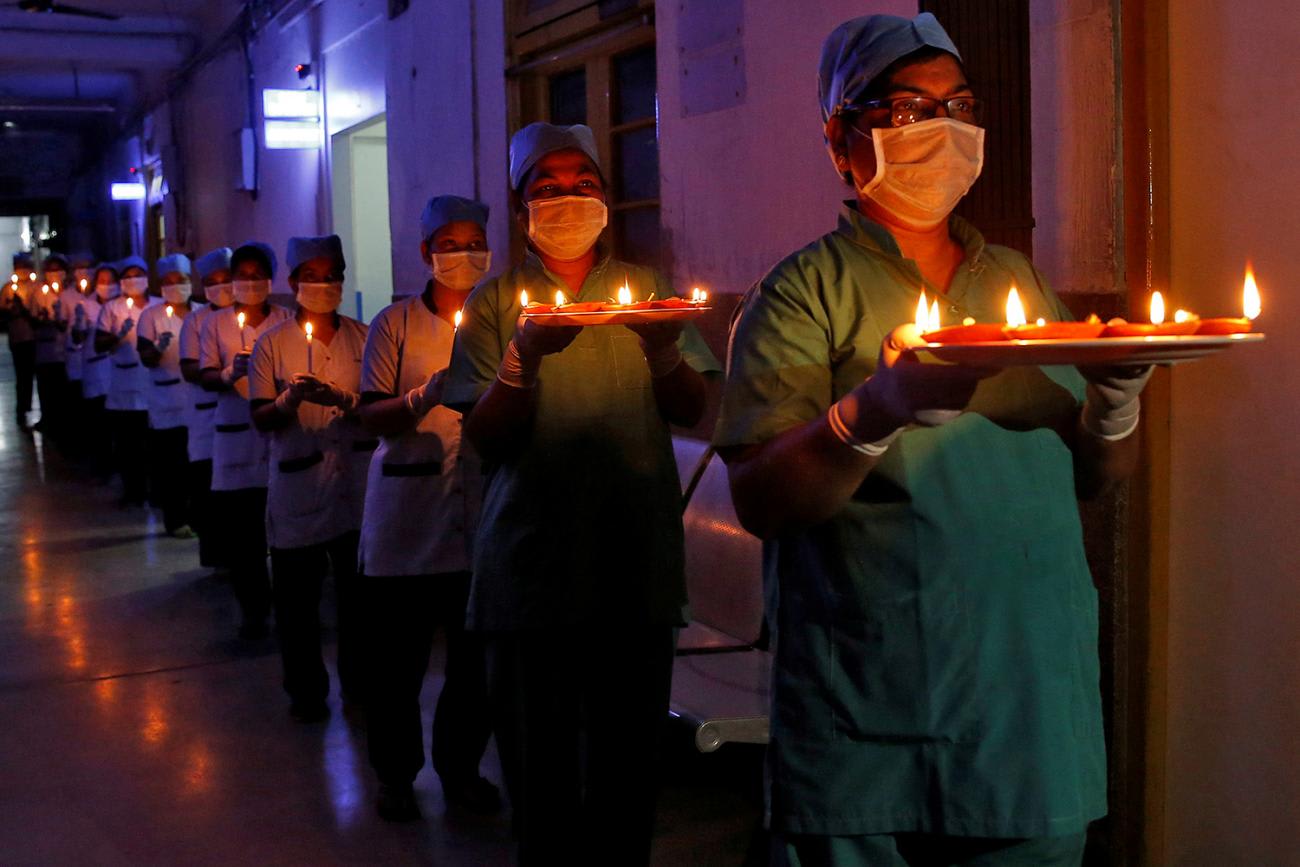
Further, in 2018, India was among the countries accounting for the largest shortages in the nursing workforce anticipated by 2030, alongside Bangladesh, Indonesia, Nigeria, and Pakistan. Women account for 88 percent of India's nursing workforce.
India, a country of 1.3 billion, was given just a four-hour notice before the weeks of extended lockdown came into force
India's dependence on the informal sector is worrisome during this crucial period. More than 80 percent of India's workforce is in the informal sector, and a third work as casual laborers. The International Labor Organization (ILO) points out that informality also has a gender bias. Women are more likely than men to be engaged in the informal economy and significantly more likely than men to be working as informal workers in the formal sector. This means that the informal sector will need a basic security net during this difficult period. India has seen consistent lack of investment in stronger public-funded health systems and a steady rise in the privatization of health care, with inevitable consequences on workers' interests. India is not alone, as a recent statement from Public Services International underscores the protection informal health workers need.
The government belatedly announced a raft of measures, after the country of 1.3 billion was given just a four-hour notice before the weeks of extended lockdown came into force. This spelled doom for migrants, who have ended up walking hundreds of kilometers to their homes from cities for assured food and water and continue to struggle to return to their homes. As a result, scores have reportedly died.

Two days after the lockdown was announced, India set out a relief plan worth $22.5 billion (about 1 percent of its GDP) that accounted for free food and cash transfers to the vulnerable and poor communities. The announcement did not make clear whether this amount was fresh money earmarked to fight the pandemic or whether it was a result of recalibration of existing state-schemes. Health insurance for workers at the front lines, including, among others, health workers, sanitation workers, and anganwadi workers, was also announced. The finance minister had announced that an estimated 2.2 million health professionals were to be provided medical insurance cover of $65,000 per person (Indian Rupees 50 Lakh).
Experts have suggested mobilizing fifty million women already affiliated with 5.4 million self-help groups in India
But after closer examination, it was reported that Indian health workers would have to die before their families received coronavirus insurance funds. This essentially means that the workers themselves would not get financial help if they were to fall ill, but their families would be compensated in the event of their death. According to reports, a significant percentage of health workers are not protected by existing insurance schemes. Other measures included one-time payments for two hundred million women ($20 over three months) and doubling access to loans for women-led self-help groups. Experts have suggested bolstering the grassroots public health movement to help address the outbreak in India by mobilizing fifty million women already affiliated with 5.4 million self-help groups.
(These measures were announced in March 2020. The Indian government announced deeper reforms and a stimulus package for the economy on May 12, 2020.)

The Need for Stronger Health Security for Indian Health Workers
India needs a systematic plan to protect health workers and not merely contingency measures in the midst of a pandemic. A few states in India have shown how providing security benefits for anganwadi workers has helped improve performance. A recent IndiaSpend analysis shows how Kerala and Tamil Nadu, two southern states, improved the functioning of these community public health systems by providing workers with funding, maternity leave, and other benefits. To be sure, IndiaSpend showed that these states were built on the back of social reform movements, strong political will, and high literacy.
This story from India illustrates the vulnerabilities of some of the weakest links in the chain of global health security.
We should not impose heroism on health professionals
Much of India depends on the informal sector to lubricate its supply chains, including those in the health sector. The government is therefore duty-bound to extend protection because it is enlisting their help in the fight against the pandemic. Governments should embrace their own and protect them if they want to win against COVID-19 among other threats. Protection from physical violence and harassment and extending financial help should be mandatory. There have been numerous reports on stigmatization and attacks on health workers. Indian cities are registering stories of doctors, both women and men, who are being attacked, only to go back to duty again. We should not impose heroism on health professionals.

Female health workers contribute an estimated $3 trillion to the gross world product—astonishingly, almost half of this work is unrecognized and unpaid primarily because women, more than men, are recruited for unpaid health roles and expected to provide care and domestic work for their families. The International Labour Organization found that women perform more than 75 percent of unpaid care work—three times higher than the rate for men.
This must change—not only in the accounting of such services at national levels while computing incomes, but more importantly in how we talk about and treat these issues. A recent analysis from more than one hundred countries pointed out that women health workers were paid 28 percent less than men. Once occupation and working hours are accounted for, the gender pay gap is 11 percent, the analysis authors said.
Women health workers were paid 28 percent less than men in more than one hundred countries according to a recent study
Already, before the crisis, 2.1 billion girls and women were living in countries that will not achieve gender equality targets by 2030. A recent OECD report points out how the pandemic will have severe consequences for a range of indicators on gender equality, including on legal frameworks, violence against women, harmful practices, unpaid care and domestic work, and sexual and reproductive health and reproductive rights. As Helen Lewis pointed out in her essay, The Coronavirus Is a Disaster for Feminism, "What we do now will affect the lives of millions of women and girls in future outbreaks."
In their negotiations at World Health Organization, on the pandemic response, countries have expressed intentions about enhancing "women's participation" in decision-making processes and mainstreaming a gender perspective in COVID-19 response and recovery, but it depends what this will really mean in practice.
